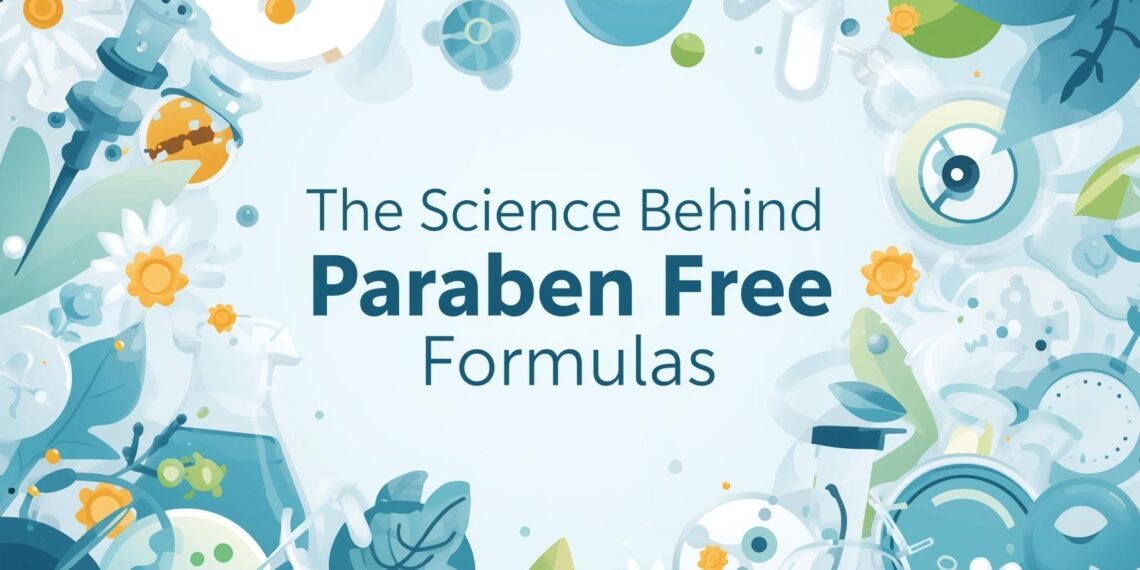In the rapidly evolving world of wellness and beauty, “paraben-free” has become a buzzword that’s hard to ignore. But what does it truly mean, and why are consumers increasingly gravitating towards products that boast this label? This article delves into the science behind paraben-free formulas, shedding light on their significance in the clean beauty movement and natural skincare industry.
Parabens are a group of synthetic compounds commonly used as preservatives in cosmetics and personal care products. Their primary function is to prevent the growth of harmful bacteria and mold, extending the shelf life of products. Despite their efficacy, parabens have become controversial due to potential health concerns.
The primary concern regarding parabens stems from their ability to mimic estrogen, a hormone in the body. This estrogenic activity has led to studies examining the link between parabens and various health issues, including breast cancer and reproductive problems. Although the scientific community has not reached a definitive consensus, the mere association has spurred demand for paraben-free alternatives.
In the European Union, certain parabens have been banned or restricted in cosmetic products, reflecting a precautionary approach. Meanwhile, in the United States, the FDA continues to study parabens but has not imposed similar regulations. This regulatory divergence highlights the complexity and ongoing debate surrounding parabens.
The growing consumer preference for paraben-free products is part of a larger shift towards clean beauty. This movement prioritizes transparency, safety, and sustainability in beauty products. Consumers are increasingly interested in what goes into their products and how these ingredients impact their health and the environment.
Clean beauty is not just a trend; it’s a cultural shift. As people become more health-conscious and environmentally aware, they seek products that align with their values. This trend reflects a broader societal move towards wellness and sustainability, influencing everything from diet to skincare routines.
Natural skincare products, often synonymous with paraben-free formulas, use ingredients derived from nature. These products appeal to consumers looking for safer, gentler alternatives to traditional cosmetics. Natural skincare brands often emphasize the purity and simplicity of their ingredients, resonating with consumers seeking to minimize exposure to synthetic chemicals.
Creating effective paraben-free formulas requires understanding both the chemistry of preservation and consumer expectations. Without parabens, manufacturers must find alternative methods to ensure product safety and longevity.
Several natural and synthetic alternatives to parabens have emerged. These include:
- Phenoxyethanol: A synthetic preservative that’s considered safer and is widely used in paraben-free products.
- Sodium Benzoate: A naturally occurring compound often used in food preservation.
- Ethylhexylglycerin: Often combined with phenoxyethanol to boost antimicrobial activity.
Each alternative comes with its own set of benefits and limitations, requiring careful formulation to maintain efficacy without compromising safety.
Creating paraben-free products involves more than just swapping out preservatives. Formulators must balance the need for preservation with the desire for natural ingredients, all while ensuring the product performs effectively. This challenge often requires innovative approaches to product development.

Advancements in technology have facilitated the development of paraben-free formulas. Improved extraction methods, better understanding of ingredient interactions, and the use of biotechnology are driving innovation in this space. These technologies enable the creation of products that are both safe and effective, meeting the demands of today’s discerning consumers.
The trend towards paraben-free and clean beauty is expected to continue growing. As consumers become more informed and demanding, brands will need to prioritize transparency and sustainability. This includes clear labeling, ethical sourcing of ingredients, and environmentally friendly packaging.
Educating consumers about the benefits and limitations of paraben-free products is crucial. Brands that engage with consumers, providing detailed information about their ingredients and formulation processes, are more likely to earn trust and loyalty.
As scientific research evolves, regulatory frameworks may change, impacting the formulation and marketing of paraben-free products. Staying informed about these developments is essential for anyone involved in the beauty industry.
The science behind paraben-free formulas is complex, involving a delicate balance of safety, efficacy, and consumer preference. As the clean beauty movement gains momentum, understanding the intricacies of paraben-free formulations will be key for brands looking to succeed in this dynamic landscape.
For wellness product developers, lifestyle magazine editors, and health and wellness coaches, staying abreast of these trends is vital. By embracing the principles of clean beauty and natural skincare, they can better meet the needs of their audiences and contribute to a healthier, more sustainable future.
In this ever-evolving industry, paraben-free products represent more than just a marketing label—they are a testament to the changing values and priorities of modern consumers. As we continue to explore the intersections of wellness, identity, and social practices, the impact of paraben-free formulas on personal well-being and societal trends will undoubtedly expand.




